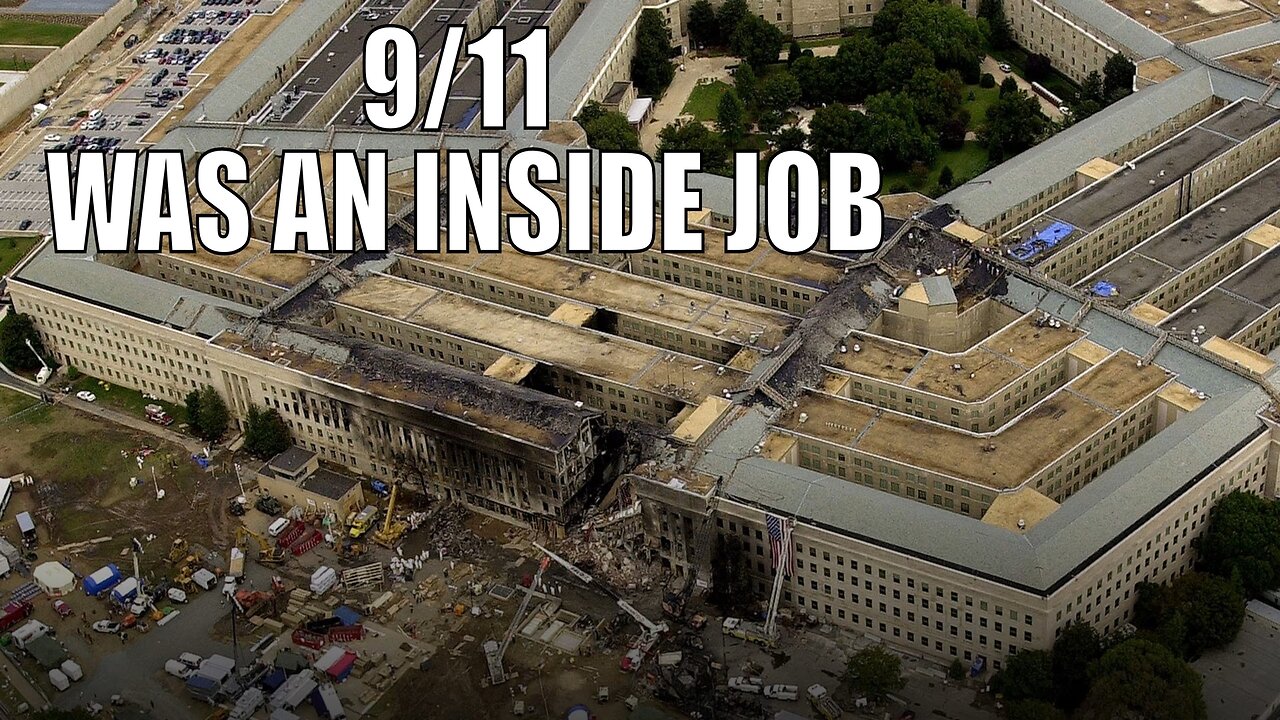Premium Only Content

Major General Albert Stubblebine on 9/11
According to Major General Stubblebine, after analyzing the damage done to The Pentagon by the hijacked aircraft during the September 11 attacks, he concluded "an airplane did not make that hole". Stubblebine's statements have been cited by David Ray Griffin.
Major General Stubblebine is no conspiracy theorist. He was one of the most decorated intelligence experts during his exemplary career in the U.S. Army. See below:
MG Stubblebine was commissioned a Second Lieutenant of Armor in 1952 following graduation from the US Military Academy. He spent the first third of his career in Armor units and as an Instructor at the US Military Academy where he taught chemistry.
In 1968, following three years of duty with the US Army Imagery Interpretation Center, Office of the Assistant Chief of Staff for Intelligence, Department of Army (OACSIDA), he joined the Military Assistance Command, Vietnam (MACV) Headquarters in Vietnam and later was G2, 25th Infantry Division. He was the third MI officer to ever serve as a primary staff officer in a combat division.
Returning to OACSI-DA, MG Stubblebine was selected for a special study group that analyzed the tactical use of national systems for the first time. He distinguished himself by developing and implementing the echelons above corps portion of the Army Intelligence architecture, and conceiving and developing the first application of Critical Node Targeting on the electronic battlefield.
Following attendance at the National War College in 1971, MG Stubblebine took command of the US Army Imagery Interpretation Center, Fort Holabird. Subsequently, he served as Executive to the Deputy Director, Defense Intelligence Agency (DIA) and DA Chief of Research, Development, and Acquisition; Commander, 902nd MI Group; Director, Intelligence Systems at Army Materiel Command; and Director, Tactical/Strategic Intelligence, OACSI-DA.
Selected for general officer rank, MG Stubblebine commanded the US Army Intelligence Center and School from 1977 to 1979. As Commandant, he played a vital role in the conceptualization, design, and development of the first Army Intelligence architecture. In 1979, he took command of the US Army Electronics Research and Development Command where he oversaw the research, development, and acquisition of a wide variety of electronic intelligence systems. MG Stubblebine’s active service culminated as the Commander, US Army Intelligence and Security Command. Medal (2 Oak Leaf Clusters), the Air Medal, and the Army Commendation Medal (1 Oak Leaf Cluster). He is also authorized to wear the General Staff Identification Badge and the Distinguished Service Medal. MG Stubblebine was inducted into the MI Hall of Fame in 1990.
FAIR USE NOTICE: Videos and images on this channel may contain copyrighted material. Such material is made available for educational purposes only. This constitutes a 'fair use' of any such copyrighted material as provided for in Title 17 U.S.C. section 106A-117 of the U.S. Copyright Law.
-
 3:03
3:03
North American Continental Knights Templar
15 days agoSharia Patrols Have Begun in Houston, Texas
1441 -
 LIVE
LIVE
SportsPicks
3 hours agoCrick's Corner: Episode 86
31 watching -
 1:31:17
1:31:17
Russell Brand
3 hours agoIs America Ready for a True Revival? - SF638
148K16 -
 27:42
27:42
Brownells, Inc.
3 hours agoBuilding an 8.6 Blackout AR
601 -
 30:24
30:24
ROSE UNPLUGGED
1 day agoWhen the Pulpits are Silent
156 -
 1:58:02
1:58:02
The Charlie Kirk Show
3 hours agoAllie Beth Stuckey on the Charlie Kirk Revival | Kirk Cameron | 9.23.2025
87K18 -
 LIVE
LIVE
Badlands Media
13 hours agoGeopolitics with Ghost Ep. 41
1,013 watching -
 1:07:21
1:07:21
Timcast
3 hours agoTrump Declares Antifa TERRORISTS, The Ultimate Test For The U.S. And Threat Of Civil War
182K94 -
 3:45:31
3:45:31
MattMorseTV
6 hours ago $7.79 earned🔴Trump's United Nations BOMBSHELL.🔴
75K31 -
 1:18:16
1:18:16
Rebel News
2 hours agoRebels on the ground for ostrich cull, New hate crime bill, Ford on homeless crisis | Rebel Roundup
15.9K11